Chairman Barr, Ranking Member Moore, and Chairman Pearce and Ranking Member Perlmutter, and Members of the both Subcommittees: Thank you for the opportunity to appear before you today. I am very pleased to offer my views, although I must emphasize that I represent only myself before you today. The Brookings Institution does not take any institutional positions on policy issues.
Two years have now passed since representatives of the United States, Iran, and five other world announced an agreement on the framework of understandings that would eventually be formalized in the Joint Comprehensive Plan of Action (JCPOA.) It is my strong belief that the Iran nuclear deal has enhanced the security of the United States and our allies in the region by deterring Tehran’s pathways to nuclear weapons capability for more than a decade and, for some aspects of the program, even longer. It is a credit to the enormous diplomatic energy that was invested in the negotiation of the deal by U.S. officials and their counterparts among the “P5+1” countries that Tehran has abided by its JCPOA obligations.
In any consideration of the challenges facing the United States and its allies in the Middle East, there is a temptation to downplay the dividends of the nuclear agreement in alleviating the urgency of Iran’s nuclear ambitions. That would be short-sighted: thanks to the JCPOA, Iran’s installed centrifuges have been cut by two-thirds, its stockpiles of low-enriched uranium are capped, its plutonium reactor rendered inoperable, its nuclear research curtailed, and every aspect of its nuclear program is now subject to intrusive international monitoring and verification. Despite some fears, the prospect of a regional cascade of proliferation appears to have receded since the agreement was inked.1
As former President Barack Obama repeatedly insisted, the accord addressed only one dimension of the challenge posed by Tehran, and in those narrow terms, it can be judged a relative success. The value of that relative success should not be underestimated; amidst the turbulence and tragedy that continues to beset the Middle East today, the absence of an agreement constraining Iran’s nuclear capabilities would magnify the risks in truly terrible ways.
However, it is equally important to recognize the finite ramifications of the nuclear deal. The sanguine expectations of some in Washington and elsewhere—expectations that were deliberately and cynically nurtured by Iranian officials over the course of the negotiations2— that the agreement might herald the beginning of a wide-ranging process of moderation in Iran’s approach to the world have proven unfounded, at least as a short-term proposition. Instead, through the long months of painstaking diplomacy that generated the JCPOA and in the wake of its conclusion and implementation, Tehran continued to do what it has done consistently since the 1979 revolution: it has sought to extend its influence throughout the broader Middle East. And it is succeeding in seizing the advantage in the roiling sectarian conflict that has infected the region, consolidating a predominant position across the broader Middle East and tentatively reorienting the regional order in its favor. As a result, the challenges posed by Tehran to U.S. interests and allies remain as relevant, and as alarming, as they have ever been.
Iranian Regional Ambitions and Activities
Under almost any conceivable leadership, Iran will seek to play an outsized role in the broader Middle East. With its long legacy of territorial integrity and relatively cohesive political heritage, Iranian influence has dominated vast expanses of what is now the Middle East and Central Asia over the course of millennia. During the Pahlavi monarchy, Iran emerged as the dominant regional power broker, courting both superpowers and asserting itself extravagantly at home and abroad. This vision of Iran’s natural predominance as the heir to the ancient Persian empire looms large for its population as well as for its leadership.
Revolutionary Iran retained the messianic ambitions of its imperial predecessor, obviously with a distinctly religious flair. The initial outlines of the Islamic Republic’s regional policy can be found in its 1979 Constitution, which includes among the pillars of the revolutionary state’s approach to the world “the defense of the rights of all Muslims.” And while it contains an injunction against interference in other countries’ internal affairs, the Constitution pledges that the Islamic Republic “supports the just struggles of the freedom fighters against the oppressors in every corner of the globe.”[3] The government adopted a formal policy of non-alignment—“neither east nor west”—as dictated by the Constitution, and the Islamic Republic quickly undertook a series of antagonistic policies toward the United States as well as Israel.
In the immediate aftermath of the revolution, Iranian leaders began assembling the infrastructure to ‘export the revolution;’ this has included support of terrorist organizations, subversion its neighbors through force as well as through propaganda, and threats and assassinations of individuals abroad who are deemed enemies of the Islamic Republic. What began with a sort of “demonstration effect”3 of opposition among Shi’a populations in Kuwait, Bahrain, and Saudi Arabia evolved into a vast official administration for seeking to topple the status quo in the Persian Gulf and the larger Islamic world by word or by deed, conducting proxy wars in Lebanon and Iraq, and sponsoring violence against a loosely-defined set of adversaries throughout the world.
The establishment and cultivation of levers designed to subvert its neighbors highlights several of the underlying factors that shape Tehran’s approach to the region, including an aspirational pan-Islamism from a regime whose original conceptualization cast itself as the inspiration and model for the broader Muslim world. In practice, this appeal to the umma has translated to sectarian chauvinism on behalf of fellow Shi’a in the Gulf states, Iraq, and Lebanon, where existing networks and domestic grievances have tended to generate greater traction for Iranian overtures and initiatives.
Perhaps the most important factor governing Iran’s ambitions and activities within the broader Middle East is the acute, abiding sense of insecurity of its leadership, a function of historical memory and searing experience. Memories of the 1953 coup, in which a democratically-elected prime minister was unseated with American assistance, remain powerful even in Islamic Iran. Those events helped to crystallize a “conspiratorial interpretation of politics” and an obsessive fear of internationally-orchestrated instability.4 The events of the revolution’s first decade—years of violent challenge to the theocracy’s existence from within and without—only fed this persistent sense of vulnerability and mistrust.
This formative period instilled enduring doubts about the reliability and utility of international norms and institutions. In the official Iranian narrative, the 1980 Iraqi invasion represented a link in a larger plot, and Tehran’s continued military campaign beyond its primary defensive aims was justified, by Ayatollah Ali Khamenei’s account, as “not a war between two countries, two armies; it was a war between an unwritten, global coalition against one nation.”5 The international community’s tepid response to the invasion and Saddam Hussein’s subsequent use of chemical weapons cemented a conviction among Iran’s leader, particularly within the security bureaucracy, that international norms constitute a sham to shield the essential avarice of America and its allies.
As a result of its early ordeals, Tehran prioritizes regime survival above all else, and self-preservation has become intertwined with a deeply-engrained conviction that the world, led by Washington, is bent on the revolutionary state’s eradication. Gripped by their perception of an intractably hostile world and a conviction that the exigencies of regime survival justify its actions, Iranian leaders exploit every opening and utilize any tool at their disposal to advance their interests.
The consequences of this dystopian vision can be seen in the assiduous campaign by Tehran to cultivate allies and proxies, bolster its indigenous deterrent capabilities, develop and expand the revolution’s strategic depth, and deploy violence and subversion across the region. For most of the past 38 years, those efforts left the Islamic Republic estranged to greater or lesser degrees from many of its neighbors and constrained and widely isolated.
Over the course of the past 15 years, however, Iranian regional sway has progressively expanded—predictably in concert with the intensification of violence and unrest that has plagued the region. An influential Iranian member of parliament has boasted that Tehran controls four Arab capitals: Baghdad, Damascus, Beirut, and Sana’a. In fact, this is an understatement of Iranian reach and ambitions. Tehran has achieved unprecedented predominance in a wide swath of the Middle East that stretches from the Mediterranean Sea to Central and South Asia. If Tehran were a constructive international actor, if its leadership respected international law and institutions, such shifts in the balance of power might be natural or even benign.
However, the very means that Iran employs to gain access and advantage sow the seeds of further chaos. As the world’s foremost state sponsor of terrorism, the Islamic Republic funnels financial support, sophisticated weaponry, and training to a widening array of militants and extremists who are determined to upend the regional order. In Yemen, Iran has escalated and prolonged a conflict with horrific humanitarian consequences in order to divert the military resources of its regional rivals and expand its ability to threaten international shipping lanes. Iran is also actively seeking to destabilize Bahrain, home to the U.S. Navy’s Fifth Fleet, and harassing U.S. naval vessels and other ships in the strategic Straits of Hormuz.
A generational investment in Hezbollah has enabled Tehran to create a hostile state-within-a state on Israel’s border. Much the same is beginning to take shape elsewhere in the Levant: Iran’s counter-ISIS campaign in Iraq has enabled its proxies to fill the security vacuum there and assume a powerful, permanent role in the central government. The conflict in Syria has honed the war-fighting skills and strategy of Iran’s Revolutionary Guard, its Qods Force, as well as Hezbollah. and generated an expeditionary army of Shia partisans from Afghanistan and Pakistan, insulating its own population from the toll of its foreign interventions.
Sanctions and Their Efficacy
The experience of the past decade underscores the efficacy of sanctions when wielded wisely. Tehran’s uncompromising stance on the nuclear program over a dozen years fueled the perception that its leadership would pay any price for the program. With the help of Congress and the world, Washington crafted a set of measures that ultimately shattered that myth. Authorities put in place in the aftermath of the 9/11 attacks to curtail terrorist financing provided a platform for assembling an unprecedented campaign that progressively denied access to the international financial system to individual Iranian banks and, eventually, most of its economy.
The sanctions instituted over the course of the past decade forced Iran to alter its uncompromising approach. Iran’s leadership has acknowledged as much; as Ayatollah Ali Khamenei, the country’s supreme leader explained in September 2015, “[w]e negotiated so that the sanctions framework will be eliminated and that sanctions in general will be lifted…The reason why we entered into negotiations and made some concessions was to lift sanctions.”6
Changes in energy markets made it possible for the first time to target Iran’s oil production without blowback to the global economy or domestic price at the pump. And Iran’s internal regression—its conveniently cartoonish then-president Mahmoud Ahmadinejad and the suppression of 2009 pro-democracy protests—facilitated newfound and profoundly valuable cooperation from Europe and much of the rest of the world. In announcing the nuclear deal to his public, Iran’s president, Hassan Rouhani, lamented the impact of the sanctions, saying that “[w]e could not buy anything, we could not import anything. We went back to the stone age system, with currency exchange and brokerage, through which one cannot live.”7
Can Additional U.S. Sanctions Create Additional Leverage?
It is not clear that new authorities are particularly useful or necessary. The deal left intact a significant array of restrictions for Iran’s economy. The U.S. Treasury Department remains the long pole in the international sanctions architecture, and even residual American measures have continued to pose a powerful deterrent against business in Iran. Notably, Iran’s worst actors, including those associated with the Revolutionary Guard Corps, remain designated under existing measures — tainting, by extension, any foreign company that does business with them. The Trump administration retains wide-ranging authority to augment the list of individuals and entities designated under the existing U.S. measures on the basis of support for terrorism, human rights abuses, and a litany of other grounds.
Beyond these specific restrictions, the primary embargo on U.S. trade and investment in Iran criminalizes even the most tangential involvement in the Iranian economy outside the specific sectors exempted under the deal or preexisting loophole. As a result, American firms and individuals are largely off-limits for transactions or even contact with Iranian businesses.
The primary embargo and the multitude of residual American sanctions benefit from a powerful force multiplier: a decade of increasingly wide-ranging restrictions and consistently rigorous enforcement, including numerous multimillion dollar penalties, has created a culture of compliance by major firms around the world. In fact, the legal and reputational risks have been so thoroughly reinforced that the impact of the openings provided to Iran’s economy under both the November 2013 interim agreement and the JCPOA has proven to be less, not more, valuable than originally anticipated.
In addition, the fact that U.S. implementation of our obligations under the JCPOA remain reliant on waivers and other inherently temporary mechanisms for reversing existing measures; that alone entails sufficient uncertainty to give major investors around the world significant qualms about committing to the kind of multi-year, multi-billion dollar projects that Iran’s energy sector requires.
And of course the deal incorporates the threat of “snapping back” other sanctions. These provisions are not perfect guarantees that the current level of multilateral restrictions on Iran can be readily reinstated. However, they too reinforce a sense of uncertainty about the medium or long-term context for investing in Iran—a time horizon that will be directly relevant for the scale and duration of major investments, particularly in the energy sector. There is no doubt that the perpetuation of economic restrictions will have a continuing dissuasive impact on Iran.
The successful experience with sanctions over the course of the nuclear crisis has fostered the perception that these measures can serve as a silver bullet for intractable issues. However, there are few guarantees that new measures to facilitate wide-ranging designation of firms that in some way intersect with Iran’s ballistic missile program or further stigmatize the Revolutionary Guards and its web of spin-off companies can provide sufficient disincentives to alter Tehran’s longstanding patterns of regional power projection or revise the broad calculus of opportunism and insecurity that underlies its regional policies.
First, the long-term track record underscores the unfortunate reality that Iran’s support for terrorism has never been driven primarily or even substantially by resource availability. In fact, Iran’s most destructive regional policies have been undertaken and sustained even at times of epic constraints. These policies were initiated in the early post-revolutionary period, when Iran’s economy was suffering the consequences of revolutionary upheaval and continuing internal unrest, and they continued and actually significantly intensified after the September 1980 Iraqi invasion of Iran and throughout the long, brutal, and costly war that followed.
In fact, many of Iran’s worst regional abuses took place during this first decade: the cultivation of Hezbollah and that group’s 1983 bombing of the U.S. Marine barracks in Beirut and the direct and often deadly assistance to subversive groups in its southern Gulf neighbors throughout the war with Iraq. Economic constraints may have energized and legitimized Tehran’s investment in unconventional warfare against its neighbors as well as American interests and allies by virtue of the limitations on Tehran’s ability to resupply its conventional war effort vis-à-vis Iraq and the cultivation of its leadership’s innate sense of suspicion.
These same trends have held over the course of the past decade, as externally-imposed economic pressures on Tehran, as a result of both sanctions and the more recent decline in oil prices, reached or even surpassed the heights of the hardships during the war. These pressures provided no remedy to Iran’s efforts to extend its influence through nefarious activities and allies, or its substantial investment in fueling and fighting conflicts in Iraq and Syria. Even since 2010, when the world has applied unprecedented financial pressure on the regime including measures that have directly targeted the institutions and assets related to Iran’s regional power projection and its support for terrorist proxies beyond its borders, there is little evidence that sanctions impeded Iran’s most destabilizing policies.
The relative consistency of Iran’s relationships with terrorist organizations and extremists across the region makes it impossible to discern much, if any, remedial relationship between the economy and the adoption of more responsible regional policies. This is in part a function of the relatively low funding threshold for these activities; the expense associated with sustaining Hezbollah’s massive rocket arsenal or fueling Bashar Al Assad’s barrel bombs is relatively easily absorbed even at times of relative scarcity. More importantly, the persistence of these policies is further confirmation that they tend to reflect opportunism on the part of Iranian leaders rather than budget priorities.
In addition to the question of the durability of Iran’s investment in subversion and terror, several other important factors would necessarily limit or even undermine the efficacy of new measures. The sanctions regime constructed over the course of the 12-year nuclear crisis benefitted from an exceptional degree of multilateral support and consensus, itself the product of enormous diplomatic energy. Over the course of 4 years and 4 successive Security Council resolutions, a consensus emerged among the major world powers around the use of economic penalties. Compounded by concerns that stretched beyond the nuclear file itself, and encouraged by a well-coordinated U.S.-led campaign that highlighted non-sanctions risks to business activities with Iran—many of Iran’s major trading partners gradually committed to minimize or even sever economic ties with Tehran.
Research on a wider variety of cases suggests that multilateralism is not, in and of itself, a guarantee of success Still, a multilateral context has been shown to contribute to adherence and to reinforce the signaling role of sanctions, and the most recent Iran sanctions bears out this proposition. In addition, multilateralism in sanctions tends to be self-reinforcing; as the UN, the European Union, and a number of individual states joined forces with Washington in pressuring Tehran, it became more viable to nudge other longstanding fence-sitters, such as the Arab states of the Persian Gulf, to cooperate in implementing UN and/or U.S. measures. And international support didn’t simply just broaden the scope of sanctions enforcement; it helped to create an interlocking and often redundant array of pressure that proved far stronger and more persuasive than the sum of its parts.
At this time, Washington does not have, nor is it likely we could quickly instigate, anything close to the level of multilateral consensus surrounding Iran’s regional policies that was built, slowly and through the fortuitous confluence of facilitating circumstances, on the nuclear issue. Iran has effectively dispelled some of the other factors, such as the international abhorrence toward Ahmadinejad and the outrage generated over his contested 2009 reelection and the repression of the protests that followed in its wake.
Russia clearly does not share our interests in ending the Syrian conflict through the removal of the vicious Assad government; Beijing will not readily jeopardize its energy security to punish Iran for its financial and material assistance to Hamas or Palestine Islamic Jihad. And even our European allies have traditionally exhibited ambivalence on Iranian support to groups such as Hezbollah. The history of U.S. policy since the Islamic Revolution offers little reason to be sanguine about a go-it-alone approach on Iran. Trying to sustain Iran’s economic isolation without the participation, or at least the acquiescence, of the rest of the world’s major powers would inevitably pose fewer costs for Tehran and greater expenses for Washington in terms of transatlantic relations and American influence around the world.
Anticipating Iran’s Responses to Further Pressure
The long history of sanctioning Iran has produced a number of readily identifiable patterns in Tehran’s response. Among these are:
- Denial: Tehran typically rejecting the significance of economic pressures and integrating the measures into the ideological narrative of international conspiracies against Iran.
- Self-Sufficiency: Iranian leaders have frequently depicted economic pressure as constructive by providing the impetus for investing in domestic capabilities and weaning the country off its reliance on the West as well as on resource revenues.
- Blowback: Tehran has also sought to emphasize that the states imposing sanctions face higher costs from any new measures against Iran than Tehran itself does.
- Bandwagoning and Diplomatic Breakout: Tehran sought to erode adherence to sanctions by the demonstration effect of its continuing engagement with the world. Coupled with the expectation of sanctions fatigue over time, Iranian leaders attempted to wait out and wear down both enforcement efforts and the international consensus to maintain pressure.
- Retaliation: During periods of intense isolation, economic pressures tend to exacerbate the regime’s innate animosities and paranoia. Iranian leaders have sought to impose costs on the sanctioning state in response to the intensification of economic pressure.
It is the final two elements of the Iranian playbook in responding to sanctions that are most germane to the discussion of the imposition of new measures at this time. Long before the 2016 American presidential election, Tehran has already begun to seek to accelerate its trade, investment, and diplomatic engagement with American allies in Europe as well as other key actors in the international community as a hedge. The goal is to splinter the transatlantic consensus that proved so effective during the nuclear crisis and isolate Washington as an outlier. We can blunt this strategy, but it will require time and sustained coordination with our European allies and conceivably China and Russia to facilitate the kind of robust common front that endured through the long process of reaching consensus around the JCPOA.
Even more concerning is Iran’s capacity for asymmetric retaliation against American interests and assets. Iranian leaders and military commanders are prone to issuing cartoonish threats of potential reprisals, and no one can doubt the obvious supremacy of the U.S. military in managing any threat arising from the Middle East. However, Tehran and its proxies vastly outnumber the current American force presence in key regional conflicts, and its leadership shares a paranoid worldview and a conviction that a fierce offense is the best defense. The risks are real, and they are most effectively mitigated with careful preparation.
Conclusion
It is necessary and appropriate to push back on Iran’s spread of malign influence. However, any such efforts are guaranteed to fail unless they are accompanied by an equally serious and sustained effort on the part of the United States to exhort, guide, and support meaningful political, economic and social reform in the Arab world and efforts at fashioning political solutions to the unwinnable conflicts in Yemen and Syria. Iran is engaged in all of the region’s chief conflicts, but it does not therefore follow that in the absence of Iran’s malign influence, those conflicts would abate. Tehran was not the progenitor of upheaval in most of the countries where its forces and proxies now hold sway. Rather, Iran has taken advantage of upheaval and domestic grievances that emerged indigenously across the Arab world, and any sensible long-term American strategy would invest resources and energy in addressing those challenges.
Like most complex challenges, the problem of Iran has resisted quick fixes for nearly four decades, and American leadership in managing the multi-faceted threats posed by Tehran will remain essential. However, the nuclear deal demonstrates that sustained collaboration among world powers can blunt Tehran’s most grievous policies and simultaneously provide Iran with a clear pathway for a more mutually beneficial engagement with the world.
-
Footnotes
- Robert Einhorn and Richard Nephew, “The Iran nuclear deal: Prelude to proliferation in the Middle East?” May 31, 2016, https://www.brookings.edu/research/the-iran-nuclear-deal-prelude-to-proliferation-in-the-middle-east/
- In his September 2014 speech to the United Nations General Assembly, Iranian President Hassan Rouhani stated, “If our interlocutors are also equally motivated and flexible, and we can overcome the problem and reach a longstanding agreement within the time remaining, then an entirely different environment will emerge for cooperation at regional and international levels, allowing for greater focus on some very important regional issues such as combating violence and extremism in the region.” See http://www.un.org/en/ga/69/meetings/gadebate/pdf/IR_en.pdf
- Graham Fuller, The “Center of the Universe”: The Geopolitics of Iran (Boulder: Westview Press, 1991), p. 94.
- Ervand Abrahamian, Khomeinism: Essays on the Islamic Republic. London: I.B. Tauris & Co. Ltd., 1993, p. 112.
- Supreme Leader Khamenei emphasizes spiritual strength of Iranian army, Voice of the Islamic Republic of Iran Radio 1, April 16, 2003.
- “Supreme Leader’s Speech in Meeting with Chairman and Members of Assembly of Experts.” September 3, 2015. http://english.khamenei.ir//index.php?option=com_content&task=view&id=2111&Itemid=4
- BBC Worldwide Monitoring, July 23, 2015.
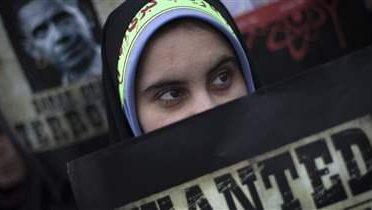
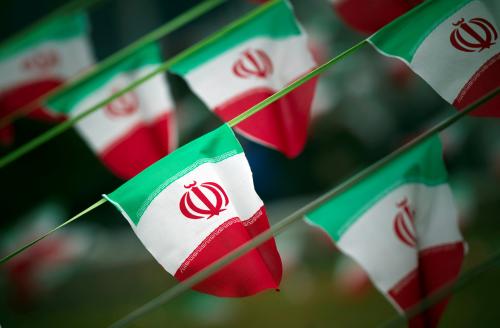
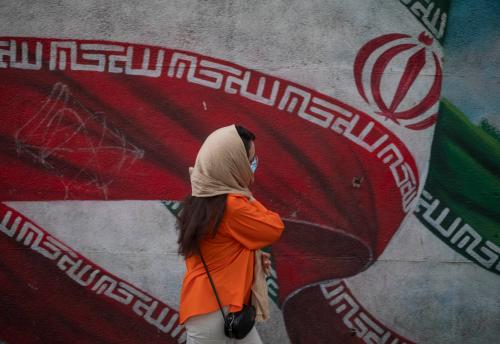
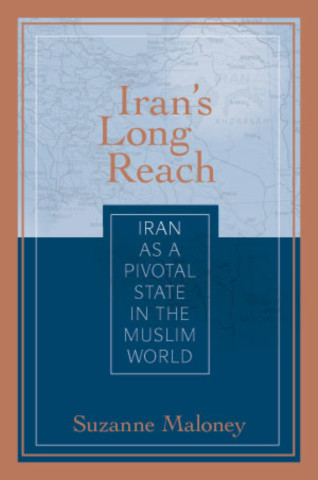
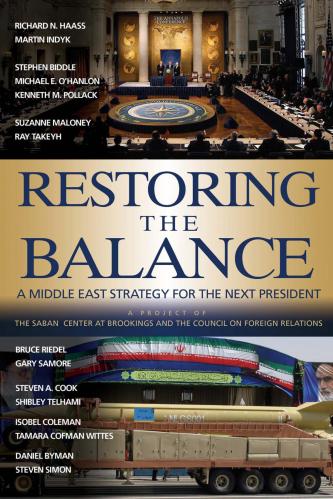
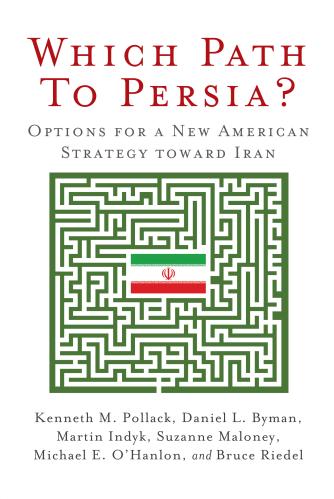



Commentary
TestimonyIncreasing the effectiveness of non-nuclear sanctions against Iran
April 4, 2017
Suzanne Maloney testifies in the House Committee on Financial Services joint hearing of the Monetary Policy and Trade and the Terrorism and Illicit Finance Subcommittees on increasing the effectiveness of non-nuclear sanctions against Iran.